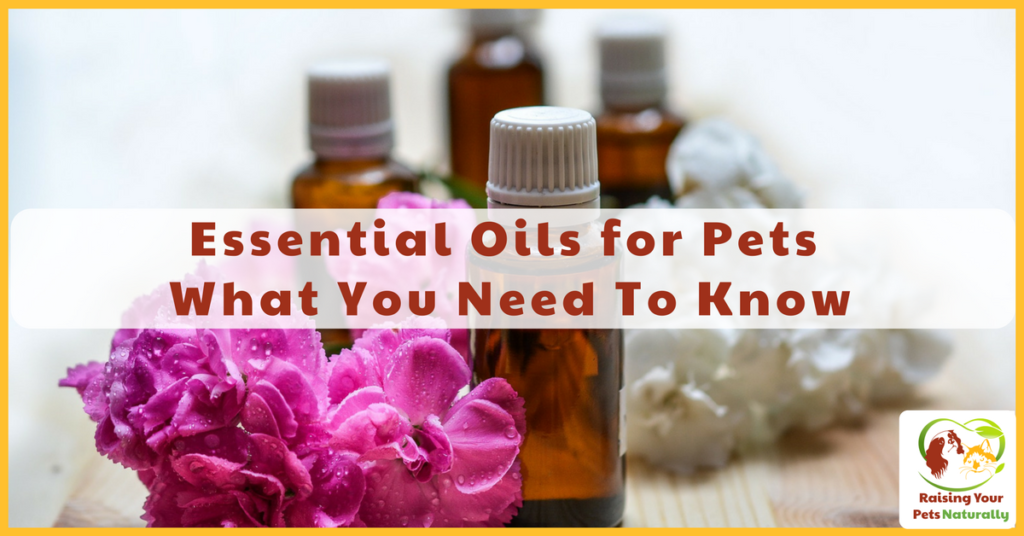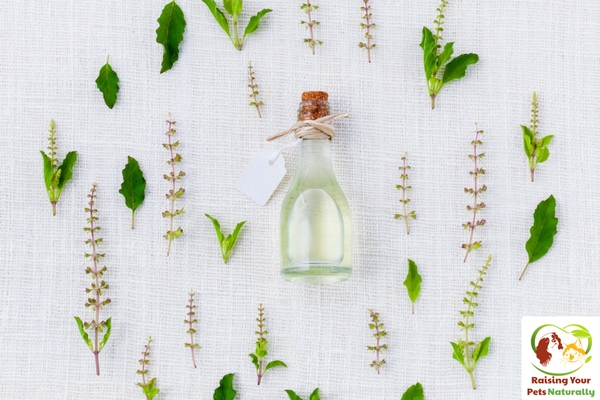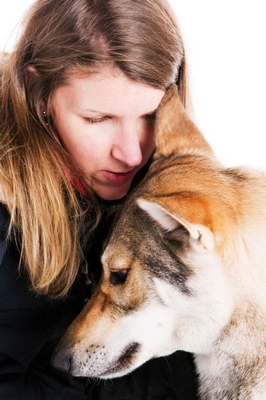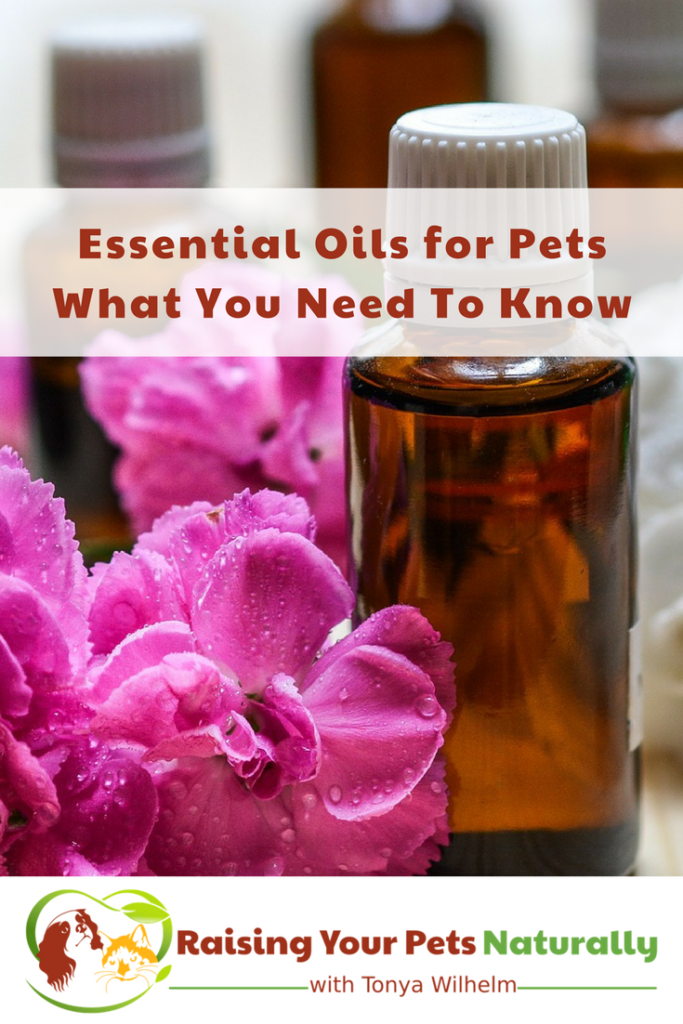Google Adsense—>

Essential Oils for Dogs, Cats, and Pets
Are Essential Oils Safe for Dogs and Cats? What You Need To Know

Over the years I’ve had a lot of clients ask me about essential oils for dogs and cats. There is no doubt that essential oils have a lot of health benefits for people and also help many pets. You may find essential oils in a lot of pet products such as essential oils for fleas, dog allergies, ear infections, itchy skin, and to help with anxiety. But are essential oils safe for dogs and cats? This has been my burning question over the years.
When I’m helping pet clients, my first rule is “Do no harm.” Essential oils are very concentrated and most definitely come with some precautions and no-nos for pets and people. Instead of jumping on the bandwagon, I’ve spent the last year researching essential oils for pets by attending some online workshops, reading articles on essential oils and pets, and reading books about essential oils for pets. Today, I want to share with you the first article in a three-part series on essential oils for pets with Isla Fishburn Ph.D. Isla has a BSc in Zoology and a Masters and Ph.D. in Conservation Biology. She is also a canine pharmacognosy practitioner, offering a range of essential oils to canines to balance their vibrational states and return the animal back to normal functioning.
Basics of Essential Oils and Pets by Isla Fishburn Ph.D. Part 1
“Essential oils are a fantastic and natural alternative or support to allopathic drugs – they are what tribal people have been using for thousands of years to heal themselves, way before pharmaceutical drugs were even available. As holistic and natural approaches to health once again becomes more common, there has been an increased interest in the health and healing benefits that essential oils can offer, not just for humans put for beloved pets too.
Everything that is living emits a vibrational frequency. When the body is balanced and healthy, the vibrational frequency resonates within a particular range. Yet, when imbalances within the body arise, the normal vibrational frequency begins to alter, becoming either too elevated or too low. If left for too long, or if further imbalances occur, then the disharmony generated can affect the body; emotionally, physically, physiologically, energetically and spiritually.
As living beings, plants too emit their own vibrational frequency. As highly concentrated forms of plant energy, essential oils carry their own vibrational frequencies. Essential oils can provide incredible healing benefits because of their potency and vibrational power. Essential oils work at a cellular level, supporting the balance of or increasing or decreasing the vibrational frequency of the individual to return it to normal function. Many essential oils have a bidirectional effect, meaning they can raise or lower the vibrational frequency of the individual to regain balance at the physical, mental, emotional or spiritual level.
Essential oil compounds are very powerful and even tiny amounts can have a big impact on every level of the body. For example, one drop of rose essential oil is suggested to have the same therapeutic value of 25 cups of rose herbal infusion. That is why they come with a caution. If not given correctly, oils can be extremely toxic or over use can cause sensitivities, even through inhalation alone. A good simple guide is, if your pet resists in any way to the oil, then stop using it and always make sure your pet has access to a space that is essential oil free. If your pet does have a topical application of essential oil and does not want this on them then DO NOT use water to wipe this off. Essential oils are hydrophobic, meaning they repel water and will seep further into the skin of your pet. Instead, to wipe away an essential oil you need to use a liquid that has a fat content itself, such as yogurt, milk or butter. Being lipophilic (liking fat) the essential oil will absorb into the fatty liquid being used to wipe the area clean.

When it comes to our pet’s health, we can use essential oils in a particular way; a way that allows your pet to choose what s/he needs for healing via the route of self-selection. This works on a vibrational level; the receptors on the dog’s cells are either attracted to an essential oil (if needed) or repelled by an essential oil (if not needed). The selection process is involuntary and based on how the vibrational energy of the essential oil and the vibrational energy of your pet “speak” to each other. Essential oils are strong, and with your pet’s super sense of smell, s/he will be able to smell the oil even from an unopened bottle. If you’re applying topically, make sure you avoid all the sensitive areas on your pet such as the eyes, nose and genital areas and make sure your dog REALLY does want the oil applied topically; cats should NEVER make direct contact with an essential oil so use these via inhalation only.
To steal the words of holistic vet Randy Kidd, “All medicine works…some of the time…in some animals.” There are numerous therapies available today that can improve the wellness of your pet and essential oils are just one of them. Powerful they are and life-changing they can be, but a cure-all they are not. When using essential oils to improve health, we must also choose to adopt a holistic approach to wellness otherwise you can run the risk of canceling out any good that the oils are doing; looking into the diet, exercise, environment and stress of your pet need to be considered also. Sometimes, it does no harm to “power up” the healing effect of the oils by using other therapies alongside, such as massage, acupuncture, nutrition etc.
The examples of how essential oils alone have supported pets (and other animals) across the globe are staggering; anything from speeding up the healing process of cuts and wounds to destroying life-threatening diseases in an individual, such as cancer. There are examples of pets receiving pain relief, digestive support, improved appetite, incontinence, skin irritations, ear infections, cancers, internal bleeding, bacterial and viral infections, diarrhea, noise phobias, trauma, aggression and fear, anxiety, hormone balance, pregnancy and birthing to name but a few. If your pet has a problem, whether physical, emotional or otherwise it really is worth considering how essential oils can support and improve your dog in returning back to normal health.
You must make sure that the essential oil you are using is of therapeutic quality. What typically guarantees this is if the oil is certified as organic, but be sure to check with the company. Never be fooled by cheap essential oils, they are usually tampered with in some way, making the oil ineffective and even possibly dangerous to use for healing purposes. In addition, an essential oil should always state its Latin name on the bottle so that you can be sure you are buying the right one (different regions may use the same English name for different plants). If you are not sure about what a certain oil should cost, find several companies that sell the essential oil and compare prices. Those that are priced at the higher end are likely to be therapeutic. If you are still not sure then ask the professional you are working with.
A cat should only ever be allowed to inhale an essential oil. Topical application or ingestion should be avoided. With dogs, all three routes can be used; inhalation, topical or ingestion, but NEVER add an essential oil to a dog’s food or to items such as a collar or bed, unless you have been instructed to do so or unless the dog can move away from it if/when the oil is no longer needed. In addition, NEVER apply an essential oil topically unless the dog appears to want it applied via this route of application. Often, you will see a dog sniff the essential oil and either move a body part closer to you that they want the essential oil applied on, or point with their muzzle to where they want it applied. Sometimes, a dog is less obvious and whilst a dog may be asking for the oil to be applied topically, you may have to work slower in observing where the dog wants it applied. Slow and steady observation is key here, a slight movement or change in the body can be an indication. Your pet must ALWAYS be able to walk away from an essential oil and have access to another room or part of the house if they do not want to be near the essential oil.

If the dog wants an essential oil applied topically this can be applied undiluted, but PLEASE only do so if you are familiar with the practice of Zoopharmacognosy or are working with a similar professional. In my experience, most dogs that have selected for topical application do so with the oil being applied undiluted. Even those oils that can irritate the skin do not do so if the dog has selected to have these applied topically. Of course, we must be cautious if an essential oil is photo-reactive or a known irritant. There are some dogs that appear to want an essential oil applied topically, yet become reserved when trying to apply this undiluted. In these circumstances we can dilute the essential oil in a pure aloe vera and water solution then observe if the dog wants this applied topically. If I am making up a dilution I usually use my crystal pendulum to dowse and find out how many drops of essential oil I should add to the aloe vera and water mix. Every dog is an individual and different dilutions will be required for each dog.
If a dog wants to ingest an essential oil, then the dog will usually lick it, but allow this to be the dog’s choice – just one lick can have the necessary effect needed for the dog (remember essential oils are highly concentrated forms of plant energy). If a dog wants to inhale the oil, they may move their nose to and from the bottle as they vary the distance they wish to work with the aroma; sometimes what appears to be a dog uninterested in the oil is actually the opposite, but the oil may be too close so the dog is adjusting to the distance it would like to work with the essential oil. A dog may inhale an essential oil, move off and lie down. This is a sign that the dog is working with the oil. Other responses include the dog lying next to the essential oil and going in to a deep trance, falling asleep, blinking lots or closing eyes tight, yawning, gulping, whining, drooling, licking or changing its breathing rhythm.”
I loved how Isla explained how essential oils can be used to help balance the body. This is the cornerstone of Traditional Chinese Medicine theory. And remember, essential oils are very powerful and can be toxic if not used properly. When considering using essential oils with pets, please work with a practitioner that specializes in essential oils and pets.
Isla Fishburn Ph.D. is a canine wellness practitioner who owns Kachina Canine Communication in Northumberland, United Kingdom. As a canine wellness practitioner, Isla focuses on the physical, emotional and spiritual needs of a dog and how to support your dog in returning him/her back to balance. Isla works with both captive wolves and domestic dogs and teaches canine wellness and balanced behavior courses, consults for a raw food company in the UK and uses a range of holistic therapies to support a dog’s wellness. Isla has a BSc in Zoology and a Masters and PhD in Conservation Biology. She is also a caninepharmacognosy practitioner, offering a range of essential oils to canines to balance their vibrational states and return the animal back to normal functioning.
Have you used essential oils on yourself or your pets? Tell me in the comments.
Are you looking for even more ways to stay up to date with Raising Your Pets Naturally? Sign up for the newsletter for more tips and promotions. Don’t forget to be social and Like, Follow and Subscribe. Comments below are always welcome.
Facebook Twitter Pinterest Instagram YouTube

 |
 |
Google Adsense—>


Great content about something I knew little about. Thanks for bringing it to the blogosphere.
Sure thing! I’m learning too.
Hmnnnn….this is a new “take” on essential oils for me. I’d not heard of them being used therapeutically as vibrational modalities (as are homeopathic remedies, flower essences and some others). None of the nolistic veterinarians I interviewed for my “natural healing” book mentioned this. I’m glad to hear the caution about cats. It’s so easy to over-treat with kitties. Thanks for the post, I love learning something new!
Glad to share something with you. Yes, I actually have heard about the vibrations of ESO for a bit. All should use caution with essential oils.
Wow. I knew that essential oils can be very potent and powerful however I didn’t realize just how so. I also didn’t know cats can only inhale the scents no ingest or topical. Thanks for sharing this post. This is all very informative for me and I’m sure others. Will share on social.
Thanks, Kamira! I appreciate your comments and shares.
Interesting read. This is the first time I have seen it mentioned that cats should only INHALE an essential oil.
This was interesting to read. I knew cats had more trouble with essential oils than dogs but I wasn’t very informed on the topic. Is there a particular brand you like?
I’m still in the learning phase on evaluating brands. I’ve been using essential oils from Mountain Rose Herbs and Edens Garden.
I actually had to read those two books for my certification course!! Love them!! Thanks for sharing.
Sure thing. Love those two books!
Lovely source of information, that I will definitely be sharing with my clients. I use essential oils with massage on my canine and equine clients often. They are a wonderful complement to each other when used properly and with care.
Thanks, Heather. I’m excited to continue to learn about their proper use.
Thank you for this! It’s a great topic although I think lots of people misuse them. These are great precautions.
I totally agree with you. That’s why I had an expert help with a little Q & A.
This is a great topic. I use essential oils for myself but am always nervous using them around my cats because I’m fearful of liver toxicity. This is the first article I’ve read that says cats should only inhale them. Very informative and well researched.
Thanks. I’ve been nervous too. I’m still early in my learning curve.
I have just started reading up about essential oils for Layla but have to be careful also because of her allergies to the environment which without meds is so under control at the moment. I do use for her when she is stressed out Dr Bach Rescue Remedy which I personally swear by.
Thanks for the great post which will help me understand more
Sure thing! Glad you are getting help with Layla.
I know very little about essential oils and after reading your post, I’m not sure I would attempt using them on the girls. I’m sure they are great, but I’m so over cautious with the girls. I’d be afraid I’d give too much of something.
I agree. I would only recommend using with cats with a professional’s guidance.
I can’t wait to read the next posts in the series too. This was excellent information! It may be coming in a future post but I’m interested to learn about the choosing procesd and how we should go about having them choose from multiple oils.
Thanks, Denise. I don’t have that post, but I bet Isla does on her site! Link above.
I have never used essential oils at all. It is something I’ve considered trying for myself, but it has been outside of my budget. People ask me about using them with their cats all of the time. My advice is always that because cats can be so sensitive to oils, that you should really seek the advice of a holistic veterinarian to make sure you are doing the right thing for your cat. Cats are good at convincing you that they have one problem when there is really something different going on inside.
Very true. I think essential oils need a professional to work with a pet case by case.
Very interesting and great post. I keep hearing more and more about essential oil for pets. Thanks for so much wonderful information because I don’t know much about it.
You bet. I’m in the learning process too.
Thanks for the information. I was not aware that using water to remove essential oils is a no-no. I am very cautious about essential oils and haven’t used them myself or on pets. I have a cat client that uses Rescue Remedy on help calm her cat, and it has helped. That’s as close as I’ve come…..
Thanks, Karen. Rescue Remedy is actually a flower essence mix, which is extremely safe, no worries using. I do a lot of flower essences with my clients.
Interesting! I do like to use natural alternatives as often as possible! Great info!
Thanks, Shayla.
Yes! I love essential oils!
That’s fantastic.
I have not tried essential oils on Kilo although I have used calming products with lavender and natural repellents. Useful to know to use fat to get them off if need be. I would be very nervous experimenting, knowing they can be toxic.
I agree. I completely recommend speaking with someone who is knowledgeable about EO and pets before just winging it.
This is really interesting information! I’ve never used essential oils for myself or my pets. I’m a bit trepidatious of them due to the warnings if not used correctly.
Love & biscuits,
Dogs Luv Us and We Luv Them
Thanks, Cathy. I totally agree they need to be used properly.
I have a few essential oils for cleaning purposes, but I’ve never used them for my pets. I do make sure to keep them up away from where the dogs could accidentally get into them.
Great points. Which also brings up the point that even our cleaning supplies should be looked at. Years and years ago, my mom used a carpet cleaner and her cat was terribly allergic. It took quite some time to figure it out.
Years and years ago, my mom used a carpet cleaner and her cat was terribly allergic. It took quite some time to figure it out.
We’re getting a new Schipperke puppy in December 2017. The room we use the most will also be her play area. We currently use a small defuser in that room but after reading your article we will be more cautious about what oils we use there and throughout our home. Thank you for your post and I look forward to reading more articles like this.
Glad to help. Good luck on the new puppy. Don’t forget to check out my book, Proactive Puppy Care!
Good luck on the new puppy. Don’t forget to check out my book, Proactive Puppy Care!